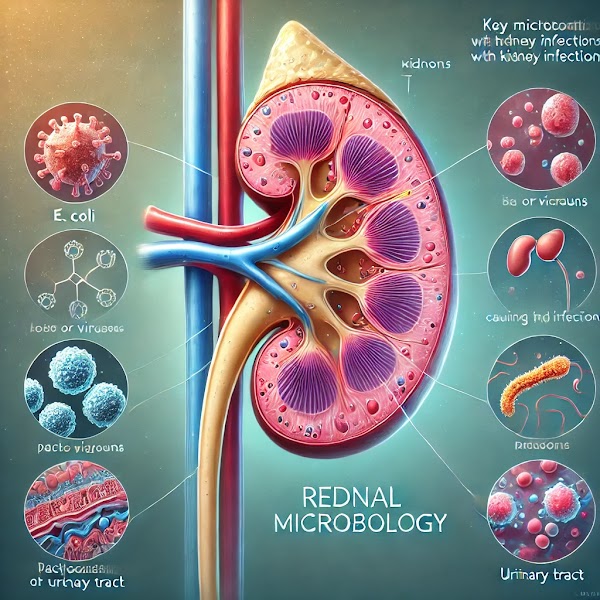Renal Microbiology MBBS basic science MCQ , CEE ,Nepal
MBBS Basic Science: Renal System Overview
Structure of the Kidneys
The kidneys are two bean-shaped organs located retroperitoneally on either side of the spine, near the lower back. Each kidney consists of an outer cortex and an inner medulla, housing millions of nephrons—the functional units of the kidneys. Nephrons are divided into two main components: the renal corpuscle, which includes the glomerulus and Bowman’s capsule, and the renal tubule. These structures collaborate to filter blood, regulate fluid composition, and form urine.
Filtration and Reabsorption
Blood enters the kidneys through the renal arteries, which branch into smaller vessels leading to the glomeruli. Here, filtration occurs as blood is forced through the glomerular capillaries, allowing water, electrolytes, and small molecules to pass into Bowman’s capsule, forming the glomerular filtrate. Large molecules like proteins and blood cells remain in the bloodstream.
After filtration, the filtrate travels through the proximal convoluted tubule (PCT), loop of Henle, distal convoluted tubule (DCT), and the collecting ducts. In the PCT, about 65-70% of filtered water and solutes are reabsorbed into the bloodstream. The loop of Henle establishes a concentration gradient, allowing further reabsorption of water and salts. The DCT and collecting ducts fine-tune the filtrate, regulated by hormones such as aldosterone and antidiuretic hormone (ADH).
Hormonal Control
Hormones regulate kidney function to maintain homeostasis. ADH, secreted by the posterior pituitary gland, increases water reabsorption in the collecting ducts, concentrating urine. Aldosterone, produced by the adrenal cortex, enhances sodium reabsorption and potassium excretion in the DCT. The renin-angiotensin-aldosterone system (RAAS) also plays a crucial role in regulating blood pressure and fluid balance, activating when blood pressure drops or sodium levels are low.
Acid-Base Balance and Excretion
The kidneys are essential for maintaining acid-base balance by excreting hydrogen ions and reabsorbing bicarbonate from the filtrate. They also detoxify the blood by excreting waste products such as urea, creatinine, and drugs through urine. This filtration and excretion process is vital for removing metabolic waste and toxins from the body.
Clinical Significance
Understanding renal physiology is critical for diagnosing and treating kidney diseases like acute kidney injury (AKI), chronic kidney disease (CKD), and nephrotic syndrome. The MBBS curriculum emphasizes these aspects to prepare students for clinical practice, where they can apply basic scientific principles to diagnose renal pathologies effectively.


 Posted by
Posted by 

No comments: